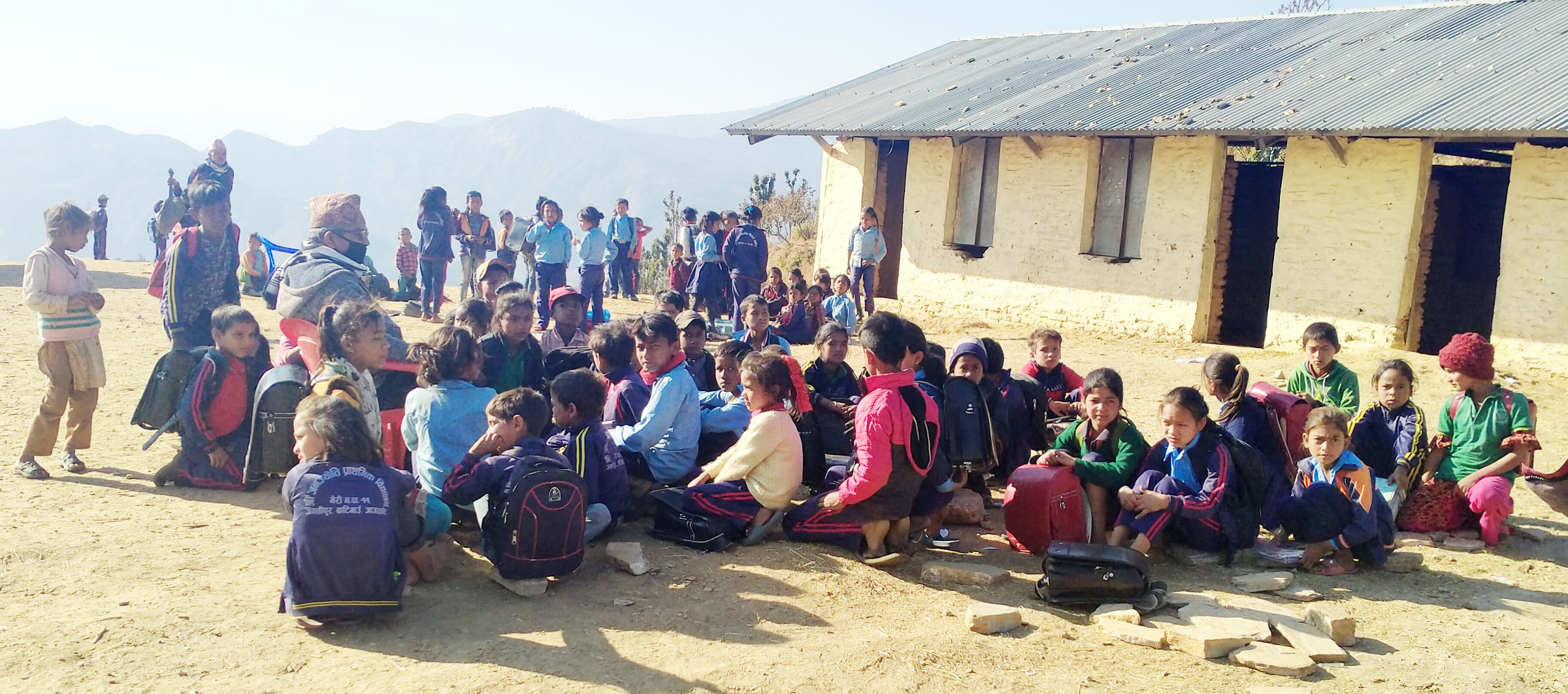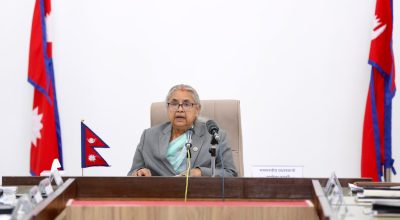
Pritam Bhattarai/RSS
Kathmandu: A majority of child care homes (CCHs) in Bagmati, Gandaki and Karnali provinces are operating in compliance with the Act Relating to Children (2018), the Human Trafficking and Transportation (Control) Act 2007, and the Standards for the Operation and Management of Residential Child Care Homes (2009).
A study report said 93.5 % of CCHs in the three provinces are operating in compliance with the two acts and the standards.
However, 9.7 percent of CCHs failed to follow these rules and standards.
The study report is prepared by the Center for Legal Research and Resource Development (CeLRRD) in coordination with the J/TIP Project supported by the US Department of State, the ECPAT Luxembourg, the National Child Rights Council (NCRC) and the Shakti Samuha.
Contrary to this, the participants of the focused group discussions comprising representatives from civil society organisations, most of them working on child rights believed that the CCHs surveyed lacked sufficient knowledge and information about their operation in accordance with the existing laws, rules and the standards.
There is a huge gap between working modalities by CCHs and existing Child Protection and Human Trafficking Laws.
Some of them are found to have forcibly separated children from their parents and forced into CCHs, said the lead researcher Kapil Aryal.
According to the Convention on the Rights of the Child, the family is the fundamental unit of society and the natural environment for the growth and wellbeing of all its members, particularly children. It discourages the separation of children from their families against their will.
Similarly, there was a gap between the formulation and adoption of operational and child safe guarding policies by CCHs.
Only slightly more than a quarter of the respondents (28.1%) said they had come up with a child protection policy, and employee administration rules (19.5%), financial administration rules (18.2%), periodic strategy and action plan of the organisation (17.7%), gender and social inclusion policy (9.5%) and other documents (7%).
A lack of proper care, accommodation, hygienic food, good health, sanitation, children being deprived of communicating with their relatives were some of the problems facing children living in CCHs, said Aryal.
Most of the CCHs surveyed were being run in rented homes that are not designed for CCH.
Similarly, most of them lacked separate floors and toilets for boys and girls, and open space for children to play.
Slightly more than three-quarters of the respondents (76.7%) reported that they had either a separate flat or building for boys and girls.
Some of the surveyed CCHs were providing food more three times a day (78%) or three times a day (20%).
But, some of them had compromised on the quality of food, health and education being offered to the children, according to the study. The Constitution of Nepal (2015) guarantees basic rights to children.
These rights include the right to name and birth registration as well as the right to identity, the right to education, health, maintenance, proper care, sports, entertainment and overall personality development from families and the state.
Similarly, it guarantees their right to elementary child development and child participation, and against all forms of abuses and exploitation.
A lack of timely monitoring and coordination among the monitoring bodies and overlapping in terms of the nature and frequency of monitoring has also made the matter worse.
The respondents reported inconsistency in monitoring.
A majority of them (61.1%) responded that monitoring was carried out every six months to one year, while 18.1% said monitoring took place every 3-6 months.
A sizable number of them (15.3%) said monitoring took place without notice and irregularly.
Assessment of children and their families should be in practice for any CCH before admitting children. But, some of the surveyed CCHs lacked it. A notable number of CCHs (10.4%) did not have any policy that guides the requirements and procedures for admitting children.
Understaffing and a lack of proper training for workers in CCHs have also added to the problems.
Some of the surveyed CCHs heavily suffered due to a workforce crunch, he said, adding that some of them were operating without registration. Putting CCHs, transit homes and shelter homes into the same basket is not justifiable.
They are in fact of different kinds and they need separate guidelines, laws and rules for operation, he said, opining that operating them through the same guidelines may prove a wrong decision.
According to a report published in 2020 by the NCRC, there were a total of 489 child care homes in 45 districts across the country where around 11,350 children were living.
The Trafficking in Persons (TIP) report by the US Department of State, said approximately of these children living in CCHs had at least one living parent.
For the research, a total of 796 children from 77 CCHs from 82 different districts in 20 local levels of 11 districts in three Bagmati, Gandaki and Karnali provinces were studied.
The top ten districts representing these children in the CCHs were from Kavrepalanchok (44), Sindhupalchok (43), Makawanpur (41), Dhading (40), Chitwan (38), Kathmandu (38), Humla (37), Nuwakot (36), Jumla (28) and Gorkha (27). A majority of CCHs surveyed were based in Bagmati Province, followed by 9 in Gandaki, and one in Karnali.














